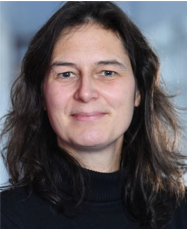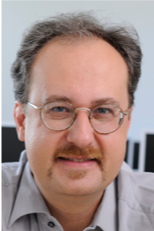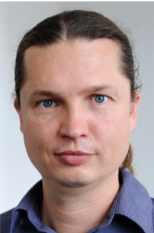Computer Chemistry Center
Overview
The Computer Chemistry Center (CCC) was founded in 1993; it currently comprises four research groups who work on simulations of biological systems (Imhof, Clark), solid-state materials and surface chemistry (Meyer) and the design of materials and processes (Zahn, also Theoretical Chemistry). Prof. Petra Imhof will take over from Prof. Clark as Technical Director in March 2020.

People
Methods and Software
The research topics treated in CCC range from protein and DNA simulations and computational drug design to simulation and design of new materials. Together, the four groups in CCC use a spectrum of calculation techniques from Ab initio molecular-orbital theory, density-functional theory (DFT), semiempirical molecular-orbital theory (SEMO) to classical molecular dynamics, first-principles molecular dynamics, multi-timescale simulations and graph theory.
A wide range of software packages is used:
- Gaussian16
- Psi4
- Turbomole
- Amber
- Gromacs
- LAMMPS
- DL-Poly
- NAMD
- Charmm
- CPMD
- Quantum Espresso
- Orca
Members of CCC are participating in software development for CPMD, LAMMPS and Psi4. Further more EMPIRE an standalone in-house simulation suite is developed at CCC.
Research Projects
CCC is currently involved in the following research projects:
- SolTech Solar Technologies go Hybrid
- KONWIHR Project Prof. Meyer
- KONWIHR Project Prof. Zahn
- IGK2495 Energy Conversion Systems: From Materials to Devices
- GRK2423 FRASCAL – Fractures across Scales
- GRK1910 Medicinal Chemistry of Selective GPCR Ligands
- SFB953 “Synthetic Carbon Allotropes”
- FOR1878 funCOS – Functional Molecular Structures on Complex Oxide Surfaces
- SPP2074 Fluidfreie Schmiersysteme mit hoher mechanischer Belastung
- DFG Normalverfahren projects
- Industry collaborations
Selected Publications
Petra Imhof:
- J. Robalo, L. Streacker, D. Mendes de Oliveira, P. Imhof, D. Ben-Amotz, A. Verde, Hydrophobic but Water-Friendly: Favorable Water−Perfluoromethyl Interactions Promote Hydration Shell Defects, J. Am. Chem. Soc. 2019, 141, 15856-15868. https://doi.org/10.1021/jacs.9b06862
- T. Ghane, R.F. Gorriz, S. Wrzalek, S. Volkenandt, F. Delatieh, M. Reidelbach and P. Imhof, Hydrogen-Bonded Network and Water Dynamics in the D-channel of Cytochrome c Oxidase, J. Membr. Biol. 2018, 251, 299-314. https://doi.org/10.1007/s00232-018-0019-x
- N. Kanaan, R. Crehuet and P. Imhof, Mechanism of the Glycosidic Bond Cleavage of Mismatched Thymine in Human Thymine DNA Glycosylase Revealed by Classical Molecular Dynamics and Quantum Mechanical/Molecular Mechanical Calculations, J. Phys. Chem. B 2015, 119, 12365-12380. https://doi.org/10.1021/acs.jpcb.5b05496
Bernd Meyer:
- M. Fleischmann, R. Gupta, F. Wullschläger, S. Theil, D. Weckbecker, V. Meded, S. Sharma, B. Meyer and S. Shallcross, Perfect and Controllable Nesting in Minimally Twisted Bilayer Graphene, Nano Lett. 2020, in print. https://doi.org/10.1021/acs.nanolett.9b04027
- Y. Xu, S. Gsänger, M.B. Minameyer, I. Imaz, D. Maspoch, O. Shyshov, F. Schwer, X. Ribas, T. Drewello, B. Meyer and M. von Delius, Highly Strained, Radially π-Conjugated Porphyrinylene Nanohoops, J. Am. Chem. Soc. 2019, 141, 18500-18507. https://doi.org/10.1021/jacs.9b08584
- S. Seiler, C.E. Halbig, F. Grote, P. Rietsch, F. Börrnert, U. Kaiser, B. Meyer and S. Eigler, Effect of friction on oxidative graphite intercalation and high-quality graphene formation, Nature Commun. 2018, 9, 836. https://doi.org/10.1038/s41467-018-03211-1
Tim Clark:
- J.P. Mora-Fuentes, I. Papadopoulos, D. Thiel, R. Álvarez-Boto, D. Cortizo-Lacalle, T. Clark, M. Melle-Franco, D. M. Guldi and A. Mateo-Alonso, Singlet Fission in Pyrene-Fused Azaacene Dimers, Angew. Chem. Int. Ed. 2020, 59, 1113-1117. HOT Paper https://doi.org/10.1002/anie.201911529
- C. Hetzer, B. S. Basel, S. M. Kopp, F. Hampel, F. J. White, T. Clark, D. M. Guldi and R. R. Tykwinski, Chromophore multiplication to enable exciton delocalization and triplet diffusion following singlet fission in tetrameric pentacene, Angew. Chem. Int. Ed. 2019, 58, 15263-15267. https://doi.org/10.1002/anie.201907221
- P. Ibrahim and T. Clark, Metadynamics Simulations of Ligand Binding to GPCRs, Curr. Opin. Struct. Biol.2019, 55, 129-137. https://doi.org/10.1016/j.sbi.2019.04.002
Dirk Zahn:
For a full overview about research topics and pulications of the Zahn group have a look his Theoretical Chemistry page.
- H.Park, A.May, L.Portilla, H.Dietrich, F.Münch, T.Rejek, M.Sarcletti, L.Banspach, D.Zahn and M.Halik, Simple and efficient magnetic removal of glyphosate from water, Nature Sustainability, in press.https://doi:10.1038/s41893-019-0452-6
- P.Duchstein, P.Ectors and D.Zahn, Molecular simulations of crystal growth: From understanding to tailoring, Advances in Inorganic Chemistry 2019, 73, 507-529. https://doi.org/10.1016/bs.adioch.2018.11.004
- M.Sarcletti, H.Dietrich, T.Luchs, D.Vivod, T.Rejek, L.Portilla, D.Zahn, A.Hirsch and M.Halik, Superoleophilic magnetic iron oxide nanoparticles for effective hydrocarbon removal from water, Adv. Funct. Mater. 2019, 29, 1805742. https://doi.org/10.1002/adfm.201805742



